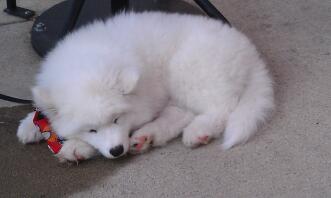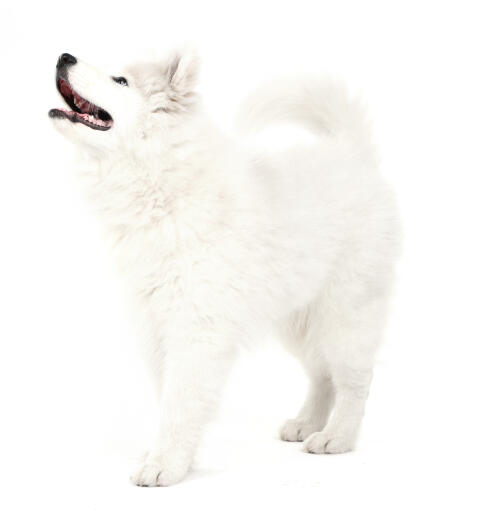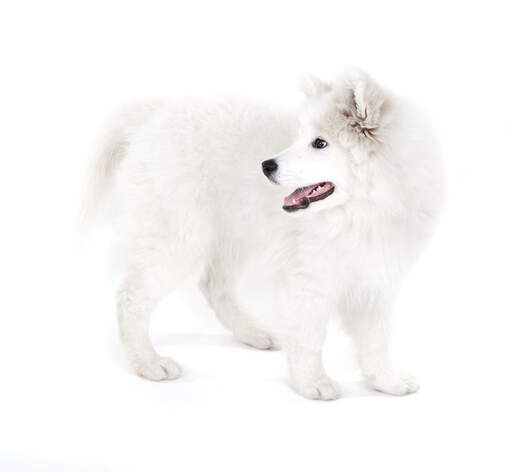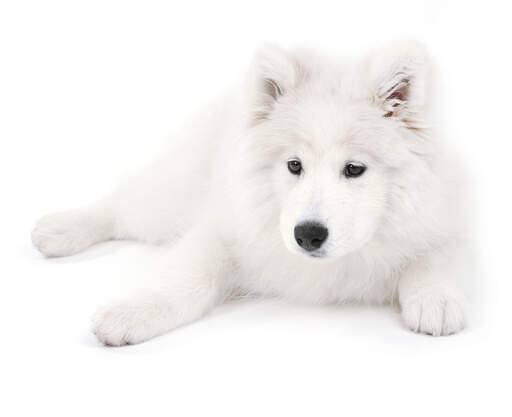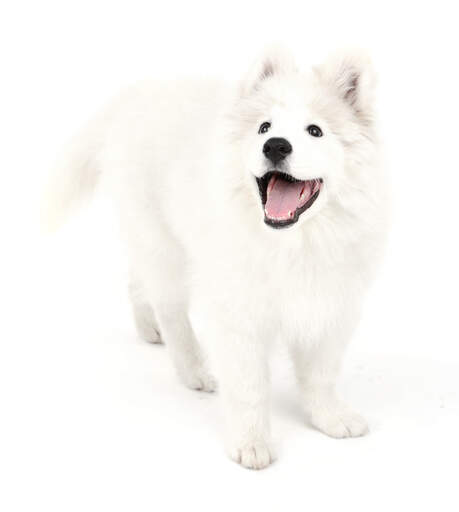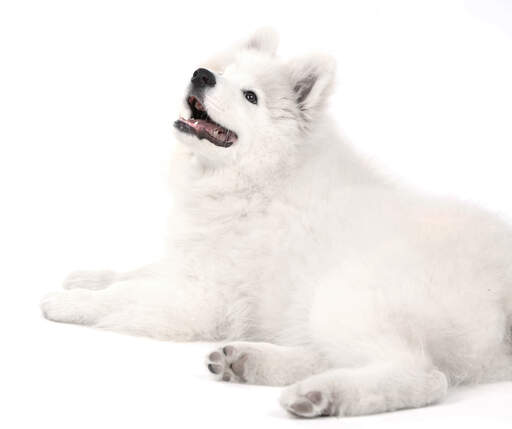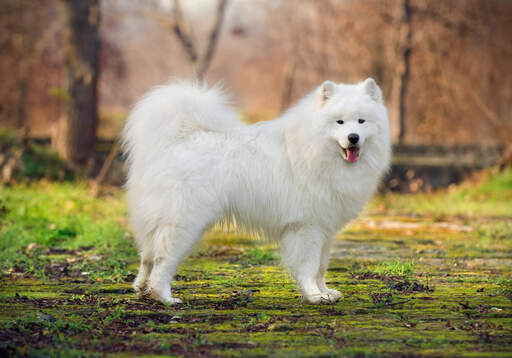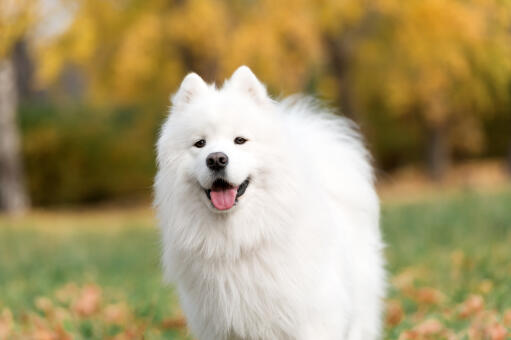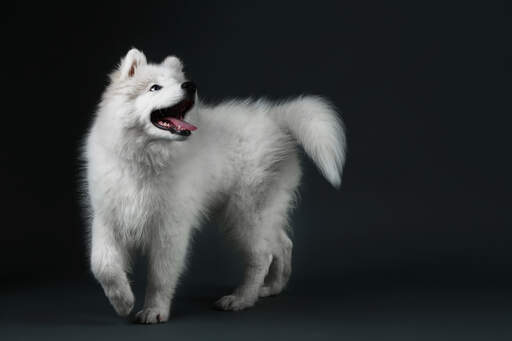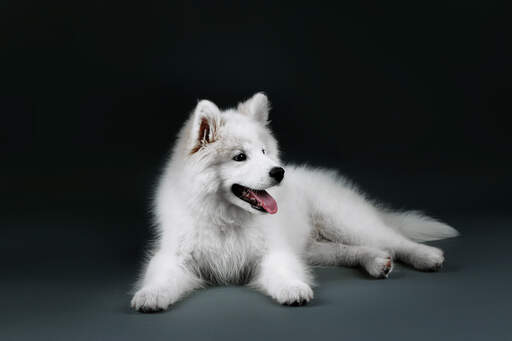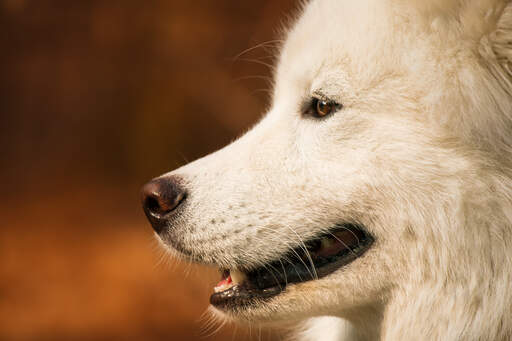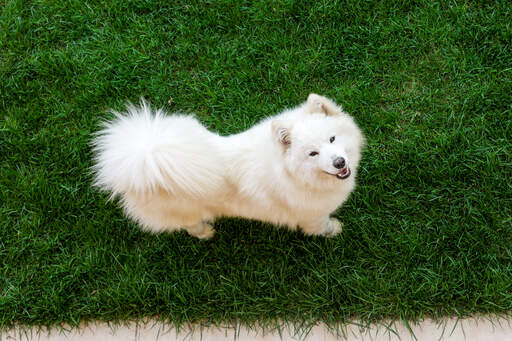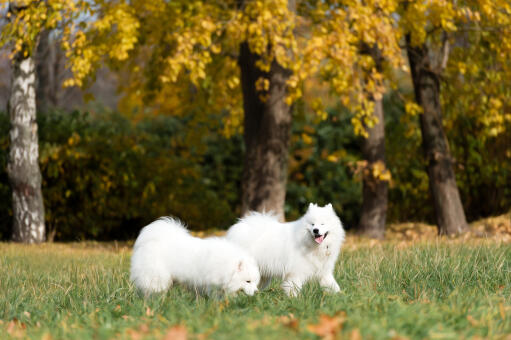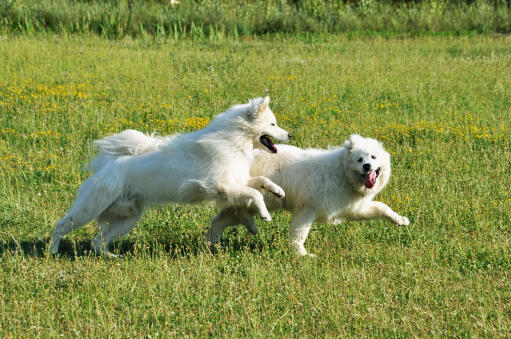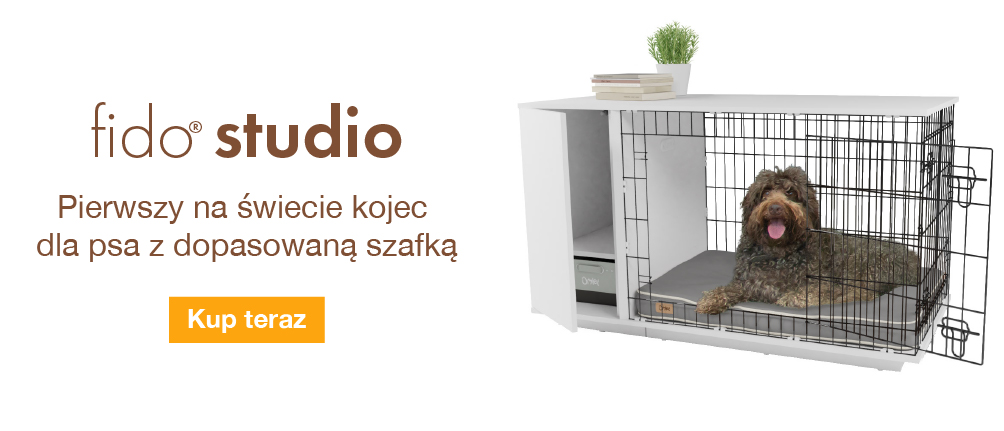Samoyed Dogs













Historia i wygląd
The Samoyed originates from Siberia and was used by the Samoyede people to herd reindeer, hunt and pull sledges across the tundra. The dogs were very close to their owners, would protect them from predators and sleep with the family to keep them warm in the frozen climate. In the late 19th/early 20th century, the breed was being used in Polar expeditions and soon became known outside Siberia. They are from the Spitz family of dogs.
Zachowanie i hodowla
Samoyeds are a gentle, intelligent breed well suited to family life as they have a need for close human companionship. They are good with children but can sometimes be a little bit too boisterous for young ones. Their size can knock a small child over without even realising it. They will bark when a stranger comes into the house, but once inside, they are usually friendly with everyone. If raised with cats and other dogs there shouldn't be a problem, but with small furry animals the hunter in them comes out. Being alert, they make good watch dogs, but do not like to be left alone for long periods as they prefer to be around people as much as possible. Destructive behaviour can develop if they are bored. They grow quickly and play should be limited to less active/strenuous activities to prevent problems with developing joints. They mature by the age of two when the bones are fully formed and they can then take part in sled pulling/agility etc. Samoyeds are independent thinkers who need a job to do in order to be happy. Agility, tracking and sled pulling challenge the breed and keep them mentally stimulated. Training is tricky as they can tire of repetition; they prefer to figure things out for themselves. Walking on a lead is never easy for a breed bred to pull, but this is especially the case here. It takes time and lots of patience to train a Samoyed. They seem to have a sixth sense when it comes to people and will offer you a hug when they feel you need it. They are perceptive and pick up on their owners moods. Samoyeds or 'Sammys' need a fair amount of exercise every day. They like to run and play but this should only be done in a secure area, due to their hunting instinct. They can be very vocal and like to bark and howl, so this needs to be considered with regard to close neighbours. Keeping them mentally stimulated. A long daily walk is usually enough to prevent problems. Sammies dislike hot weather and they will try and find somewhere cool to sleep through the worst of the heat. This might involve digging a hole in the garden to sleep on the cool earth.
Their white coat needs constant attention to keep it looking pristine. Brushing every day/other day is usually enough to prevent matting. Canine Hip Dysplasia and Gastric Torsion (Bloat) are sometimes seen in the breed, but otherwise they rarely suffer ailments.
Temperament
Samoyeds have a gentle and dependable temperament. They are sociable dogs who enjoy meeting other dogs and new people. Calm indoors but happy to charge around playfully when given the chance for a game.
Problemy ze zdrowiem
Health problems that may affect Samoyeds include canine hip dysplasia (CHD), bloat, progressive retinal atrophy (PRA: degeneration of the retina which can lead to blindness), cataracts, glaucoma, other eye diseases, epilepsy, kidney disease and heart disease.
Informacje o rasie
- Status: Rasa powszechnie spotykana
- Długość życia: 12 - 13 years
- Waga: 23 - 30 kg
- Wysokość: 19 - 23"
- Bardzo rzadka rasa.: Nie
- Sierść: M
- Wymagania co do sierści: Codziennie
- Miasto lub gmina: Kraj
- Minimalny rozmiar domu: Duży dom
- Minimalny rozmiar ogrodu: Duży ogród
- Typ rasy: Pasterski
- Rozmiar: L
- Poziom energii: M
- Wymagane ćwiczenia: Ponad dwie godziny
Samoyed Pictures
